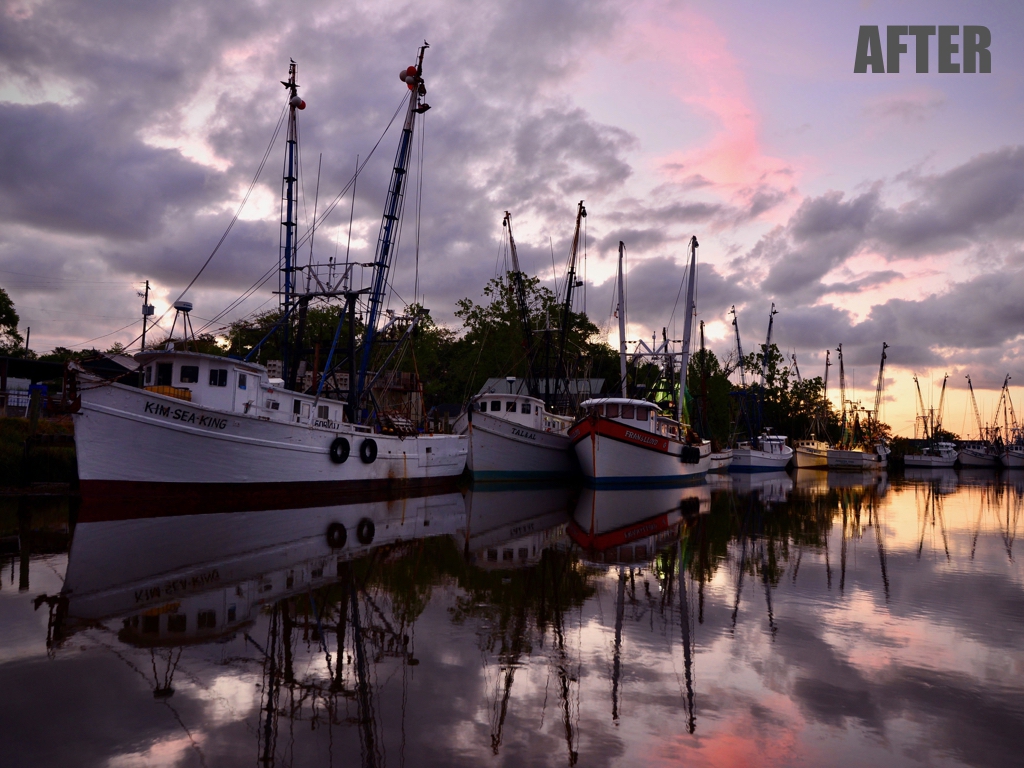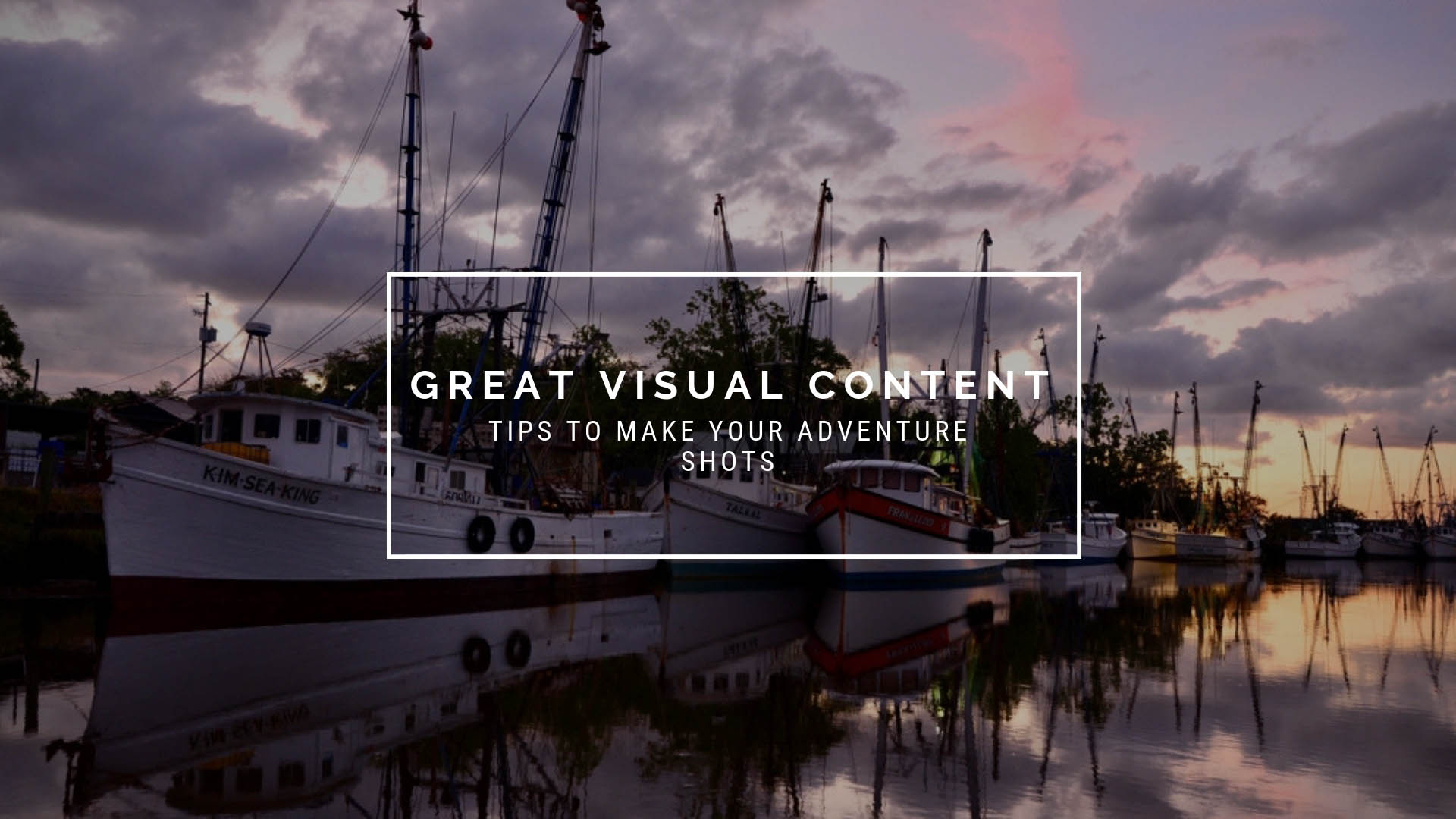Ever hear the phrase that people eat with their eyes? It’s true. However, this is not just true with food—it’s true with almost any selection we make. From store shelves to products on the internet, to trips we take to far away places… visual presentation plays a huge role in whether prospects choose your offerings or the offerings of your competition. So much so that company X and company Y could both be running a similar bike tour on the same roads in the same location and the one with better photographs and compelling copy will win nearly every time.
The Social Media Beast Always Needs to Eat!
I know it, you know it, and your competition knows it; stop posting fresh content to your blog, your Facebook, your Instagram, or YouTube and see not only your reach suffer, but your business suffer too.
We live in a consumption-based world where content can, at times, have a very short shelf life. The reason I write “at times” is because high-quality and well-presented visual content that serves a purpose and tells a story can have legs for many years, serving your outdoor and adventure brand well. So, while post frequency matters, crummy content will only hurt your brand.
Do yourself a favor and don’t get caught in the game of posting for the sake of post volume. Unless you have a dedicated media person that really knows their stuff, it’s difficult to keep volume and quality high. Keep your focus on the quality of what you’re sharing and you’ll see organic success in your reach and business.
This short video clip says it well. You can watch the full segment here.
Visual Content Quality Tip #1 – Plan Your Shots
If I could only share one tip with you in improving the quality of your visual content, this would be it. Forget gear recommendations, a software program, or any other supportive tool you could fork money out for… planning your shots is critical to your success in telling a story. Without story, you have nothing.
Here are some simple questions that you can answer that will help set up your photographers and videographers with a clear purpose:
- How are photos and videos going to be used? Maybe it’s a wide shot for a Facebook header or maybe it’s a profile shot for a print piece.
- Who are you trying to attract? What is the target audience? The answer to this can drastically improve the outcome of the shot(s).
- What story needs to be portrayed? Maybe you’re following the journey of a person or telling the history of a place, or even a combination of the two.
- What emotions are you trying to evoke? Maybe it’s the beauty of a place or the smiling face of a satisfied guest.
Visual Content Quality Tip #2 – Make Color Correction Your Friend
Camera lenses are never going to see the full spectrum of light and color the way our eyes do with a single shot. Whether you’re shooting with an action cam, DSLR, or cellphone, each one has an embedded program that can shape the way the image comes out. This is also why Instagram and SnapChat filters are so popular. Because they apply color correction as well as effects to photos and videos that have the ability to enhance the experience for the viewers of that content.
Is there ever a perfect photograph coming directly out of the camera? Well, in the outdoor adventure world we have one BIG factor going for us and that is natural light. Cameras love sunshine and natural light tends to produce the best images. That said, we also have lots going against us, like cloudy days, wet conditions, and fast-moving subjects. It isn’t easy to get camera settings perfect all the time when shooting on the fly. That’s why it’s important to color correct.
Color Correction Can Make or Break Your Photos and Videos. There are many applications on both desktop and mobile that can help assist you in color correction to bring out the most in your photos and videos. Our agency is a fan of the Adobe Creative Cloud suite of professional tools for desktop and playing with Photo Lab Pro on mobile devices. That said, we’ll get more into software and tools in another post. What is recommended more than specific tools is to pick one and practice. Color correction is an art form and the better you get, the better your visual content will be.
Check out the image below to see the difference between a good image and a great one!


With some subtle changes like increasing the exposure (light) and boosting the saturation (colors), we get a good photo and make it great!
Visual Content Quality Tip #3 – Keep it Stable!
Stability, stability, stability! You may be filming or photographing beautiful locations with amazing lighting with a clear purpose in mind…
But, it will never make it past the cutting room floor because of its lack of stability.
Handheld GoPro footage shot from a bike on a rocky trail, or a photo taken in low light without a tripod can leave everyone cross-eyed and confused! “What was that?” someone asks, and we can only shake our head sadly and say, “Maybe it was the Mayan ruins, or a beautiful sunset…no one will ever know!”
So, try to smooth out your shots. It might mean stepping off the bike for 10 seconds to grab a quick panning video with your GoPro, or remembering to hold that camera steady for an extra moment in lower light conditions. You can also consider purchasing a stabilization device such as gimbals or cameras that have a built-in stabilizer.
Get Inspired
Want some inspiration for amazing visual content? Check out the Instagram account from Ten Tree. They’ve never once posted an image for the sake of posting it. Rather, they put quality number one. Their numbers show it in social shares, trees planted, and in the business bottom line.
Your Bottom Line
So, the bottom line for you and your brand is that while our friends might be posting gross photos of their lunch or grainy low light images of their cat—your brand deserves better. Every photo, every video and story you tell should have the ability to go to work for you 24/7 and enhance your digital presence.

